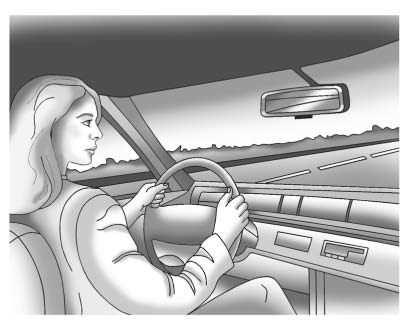Steering in Emergencies
There are times when steering can be more effective than braking.
For example, you come over a hill and find a truck stopped in your lane, or a car suddenly pulls out from nowhere, or a child darts out from between parked cars and stops right in front of you. These problems can be avoided by braking—if you can stop in time. But sometimes you cannot stop in time because there is no room. That is the time for evasive action—steering around the problem.
The vehicle can perform very well in emergencies like these. First apply the brakes. See Braking . It is better to remove as much speed as possible from a collision. Then steer around the problem, to the left or right depending on the space available.

An emergency like this requires close attention and a quick decision.
If holding the steering wheel at the recommended 9 and 3 o'clock positions, it can be turned a full 180 degrees very quickly without removing either hand. But you have to act fast, steer quickly, and just as quickly straighten the wheel once you have avoided the object.
The fact that such emergency situations are always possible is a good reason to practice defensive driving at all times and wear safety belts properly.
See also:
Leaving the Vehicle With the Engine
Running
WARNING:
It can be dangerous to leave the vehicle with the
engine running. The vehicle could move suddenly if
the shift lever is not fully in P (Park) with the parking
brake firmly set. And, if ...
Tire Size
The following examples show the different parts of
a tire size.
(A) Passenger (P-Metric) Tire: The United
States version of a metric tire sizing system. The
letter P as the first character in th ...
Aluminum or Chrome-Plated Wheels
and Trim
The vehicle may have either aluminum or chrome-plated
wheels.
Keep the wheels clean using a soft clean cloth with mild
soap and water. Rinse with clean water. After rinsing
thoroughly, dry with ...


